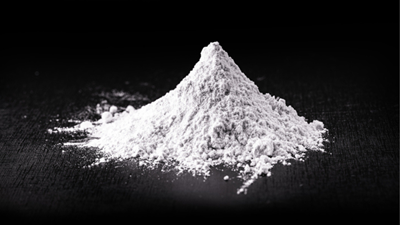
Jul . 27, 2024 19:12 Back to list
Exploring the Properties and Applications of Rutile and Anatase Titanium Dioxide in China
Exploring the Significance of Rutile and Anatase Titanium Dioxide in China
Titanium dioxide (TiO₂) is a naturally occurring oxide of titanium, known for its exceptional properties and widespread applications across various industries. In China, the production and utilization of titanium dioxide, specifically in its rutile and anatase forms, play a critical role in both local and global markets. These two polymorphs of titanium dioxide possess distinct characteristics that lend themselves to different uses, making them integral to China’s industrial landscape.
Rutile Titanium Dioxide
Rutile titanium dioxide is characterized by its high refractive index and excellent opacity, making it one of the most preferred choices for color pigments. The bright white pigment derived from rutile TiO₂ is widely used in paint, coatings, plastics, and paper industries. In the construction sector, rutile is especially valued for its durability and resistance to fading under ultraviolet (UV) light. As China's construction industry continues to expand, the demand for high-quality rutile titanium dioxide has surged, further bolstered by the nation’s robust economic growth.
Moreover, rutile titanium dioxide also finds its place in the cosmetics industry. Its UV-blocking properties make it an essential ingredient in sunscreens and skincare products. With increasing consumer awareness regarding skin protection and the importance of high-quality ingredients, China’s cosmetics market has embraced rutile TiO₂, leading to a burgeoning sector focused on cosmetic formulations that prioritize safety and efficacy.
Anatase Titanium Dioxide
Anatase titanium dioxide, on the other hand, is primarily known for its photocatalytic properties. It is widely used in applications such as environmental purification, self-cleaning surfaces, and water treatment processes. The structure of anatase allows it to absorb ultraviolet light effectively, which activates its photocatalytic capabilities. This has made it a popular choice in the production of catalysts and in technologies aimed at reducing pollution levels.
china rutile and anatase titanium dioxide

Furthermore, the demand for anatase titanium dioxide has grown with the increasing emphasis on sustainable and eco-friendly technologies within China. As the country intensifies its efforts to combat air pollution and promote sustainable practices, the utilization of anatase TiO₂ in catalytic converters and air purification systems has become more prominent. This aligns with the Chinese government’s initiatives to promote green technologies and reduce environmental footprints.
Economic Impact and Global Leadership
China has established itself as a global leader in the production of titanium dioxide, with significant capacities for both rutile and anatase forms. The country’s rich deposits of titanium-bearing minerals, combined with advanced production techniques, have positioned it well in the international market. Consequently, Chinese manufacturers are major suppliers of titanium dioxide, influencing pricing and availability on a global scale.
The competition in the titanium dioxide market has spurred continuous innovation among producers, leading to advancements in processing methods and product quality. As companies strive to enhance their offerings, the global market benefits from increased efficiency and reduced costs. This dynamic not only enhances China's economic stature but also contributes to sustainability goals worldwide.
Conclusion
In conclusion, rutile and anatase titanium dioxide are pivotal to various industries within China, driving both economic growth and advancements in technology. As the nation continues to evolve in terms of industrial capabilities and environmental responsibilities, the significance of these two forms of titanium dioxide is likely to expand even further. With ongoing research and investment in sustainable practices and innovative applications, China’s role in the global titanium dioxide market is set to remain influential in the years to come.
-
Premium 6618 Titanium Dioxide for GPT-4 Turbo Applications
NewsJul.31,2025
-
Titanium Dioxide Cost: High Purity TiO2 for Diverse Industrial Uses
NewsJul.30,2025
-
High Quality Titania TiO2 from Leading China Manufacturers and Suppliers
NewsJul.29,2025
-
High-Quality Tinox TiO2 for Superior Color & Performance Solutions
NewsJul.29,2025
-
High Quality Titania TiO2 from Leading China Supplier & Manufacturer
NewsJul.29,2025
-
High-Performance r6618 TiO2 for Superior Whitening and Versatility
NewsJul.28,2025
